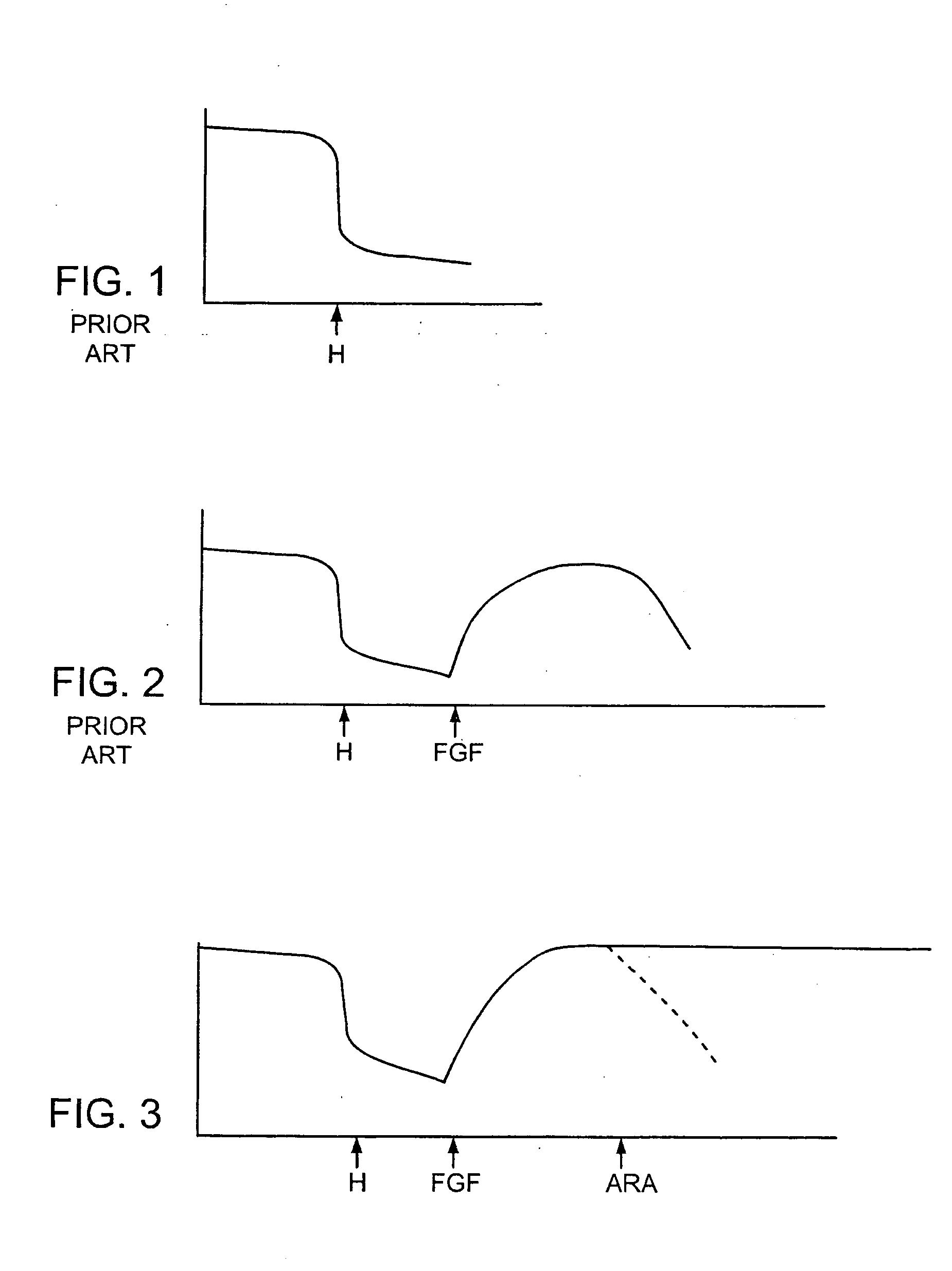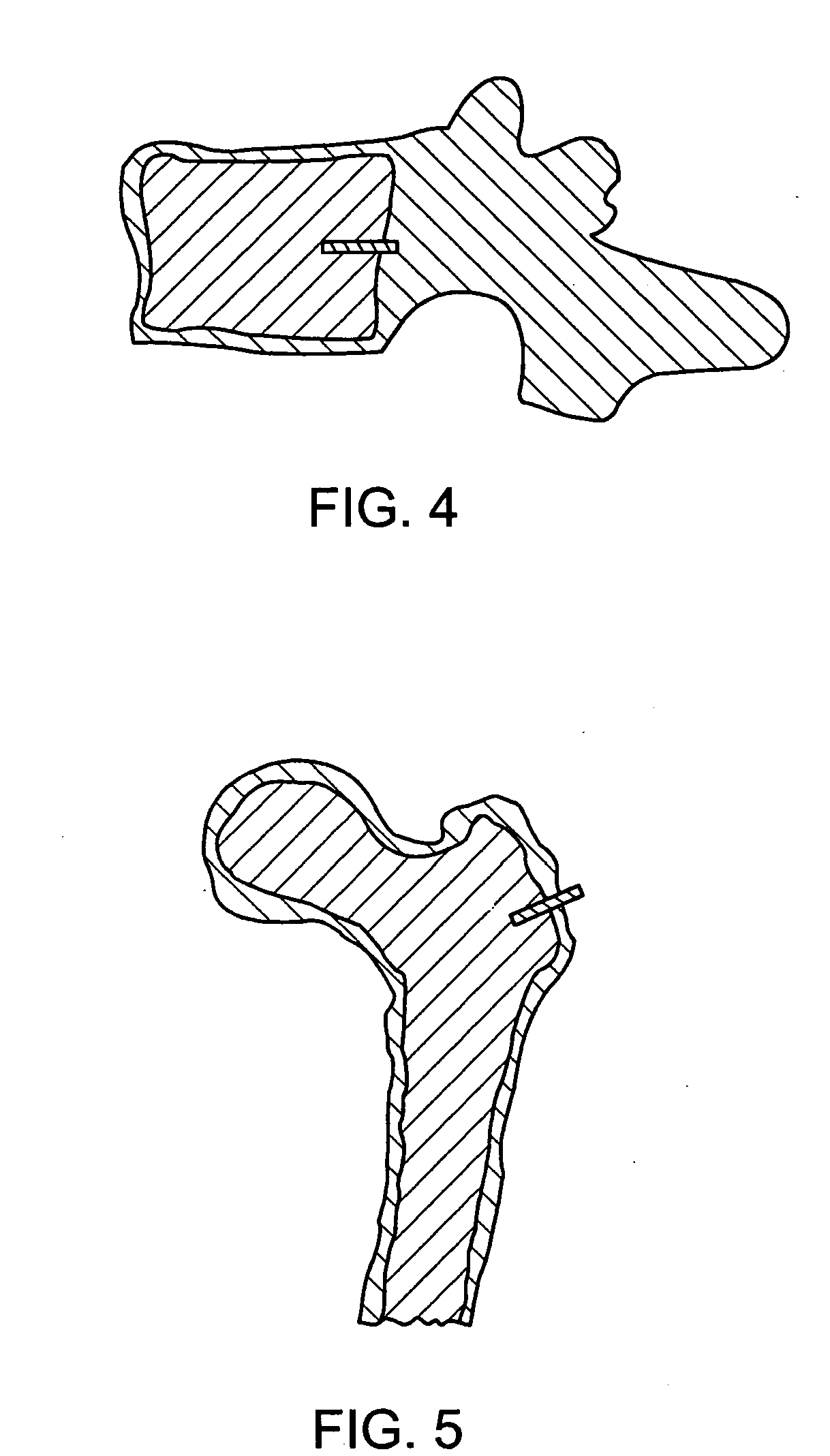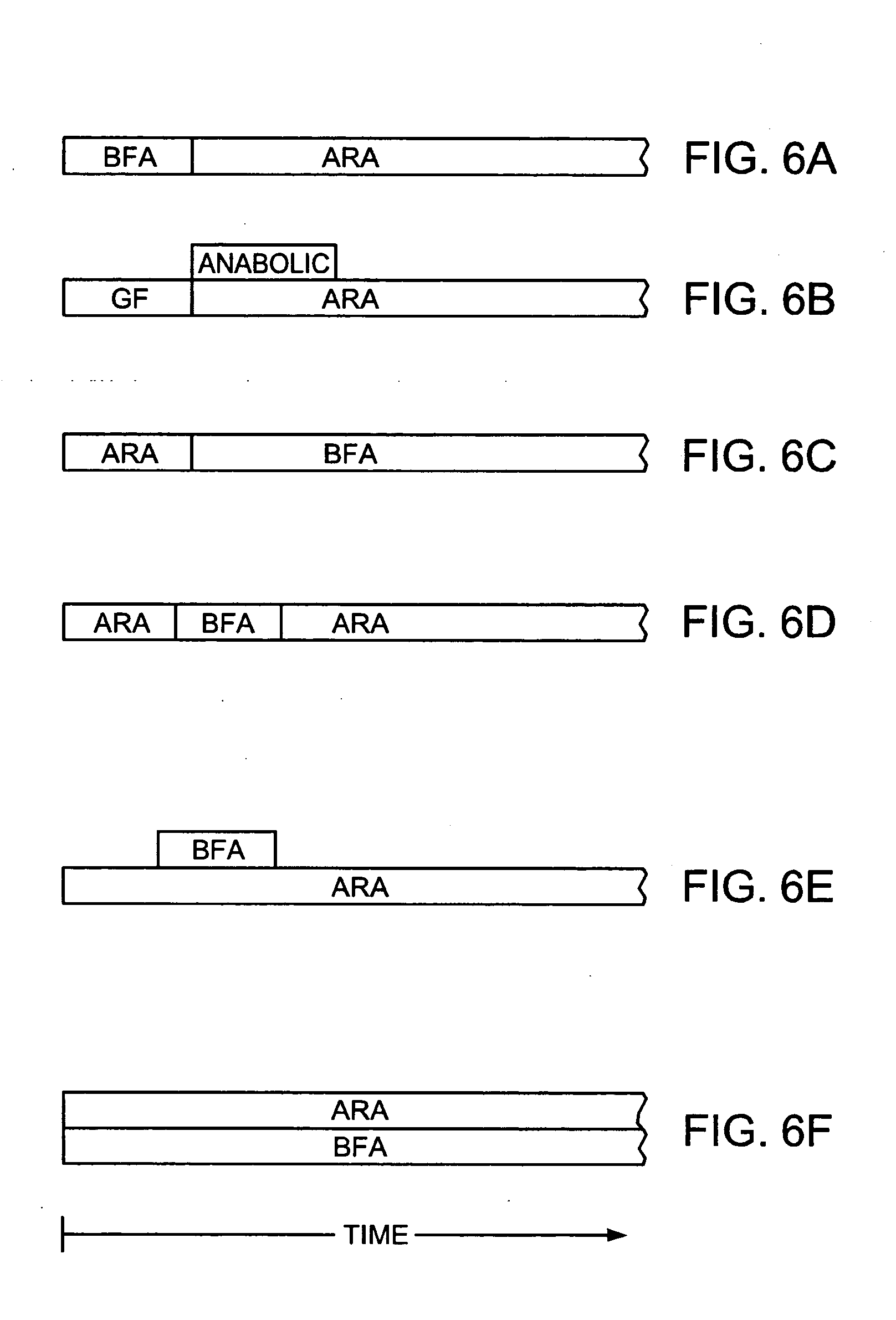Local intraosseous administration of bone forming agents and anti-resorptive agents, and devices therefor
- Summary
- Abstract
- Description
- Claims
- Application Information
AI Technical Summary
Benefits of technology
Problems solved by technology
Method used
Image
Examples
example 1
[0396] This non-limiting prophetic example describes how to intraosseously administer a first formulation comprising a bone-forming agent and a second formulation comprising a HSCA (an anti-resorptive agent) into an uncoupled resorbing bone.
[0397] First, a clinician uses a diagnostic test to verify that a bone within a patient is osteoporotic.
[0398] Next, the clinician provides a local anesthetic (such as 5 ml lidocaine) to the region dorsal to the vertebral body to reduce subcutaneous pain.
[0399] Next, the clinician punctures the skin of the patient dorsal to the OP bone with a relatively large (e.g., 18-19 gauge) needle having a stylet therein, and advances the needle through subcutaneous fat and dorsal sacrolumbar ligament and muscles to the outer edge of the pedicle, and finally punctures the cortical wall of the uncoupled resorbing bone.
[0400] Next, the stylet is removed from the needle.
[0401] Next, the clinician receives a drug delivery device of FIG. 9, in which an osmot...
example ii
[0404] This non-limiting prophetic example describes how to intraosseously administer a formulation comprising a HSCA (an anti-resorptive agent) and saline into an uncoupled resorbing bone.
[0405] First, a clinician uses a diagnostic test to verify that a bone within a patient has high levels of a particular pro-inflammatory cytokine.
[0406] Next, the clinician provides a local anesthetic (such as 5 ml lidocaine) to the region dorsal to the vertebral body to reduce subcutaneous pain.
[0407] Next, the clinician punctures the skin of the patient dorsal to the bone with a relatively large (e.g., 18-19 gauge) needle having a stylet therein, and advances the needle through subcutaneous fat and dorsal sacrolumbar ligament and muscles to the outer edge of the bone, and finally punctures the cortical wall of the uncoupled resorbing bone.
[0408] Next, the stylet is removed from the needle.
[0409] Next, the clinician receives a syringe having a smaller gauge needle adapted to fit within the l...
example iii
[0412] This non-limiting prophetic example is substantially similar to that of Example II, except that the formulation comprises a depot-type sustained release device comprising the co-polymer poly-DL-lactide-co-glycolide (PLG). The formulation contains infliximab as the antagonist, and has an infliximab concentration of between about 30 mg / ml and about 60 mg / ml.
PUM
| Property | Measurement | Unit |
|---|---|---|
| Pore size | aaaaa | aaaaa |
| Pore size | aaaaa | aaaaa |
| Pressure | aaaaa | aaaaa |
Abstract
Description
Claims
Application Information
 Login to View More
Login to View More - Generate Ideas
- Intellectual Property
- Life Sciences
- Materials
- Tech Scout
- Unparalleled Data Quality
- Higher Quality Content
- 60% Fewer Hallucinations
Browse by: Latest US Patents, China's latest patents, Technical Efficacy Thesaurus, Application Domain, Technology Topic, Popular Technical Reports.
© 2025 PatSnap. All rights reserved.Legal|Privacy policy|Modern Slavery Act Transparency Statement|Sitemap|About US| Contact US: help@patsnap.com



